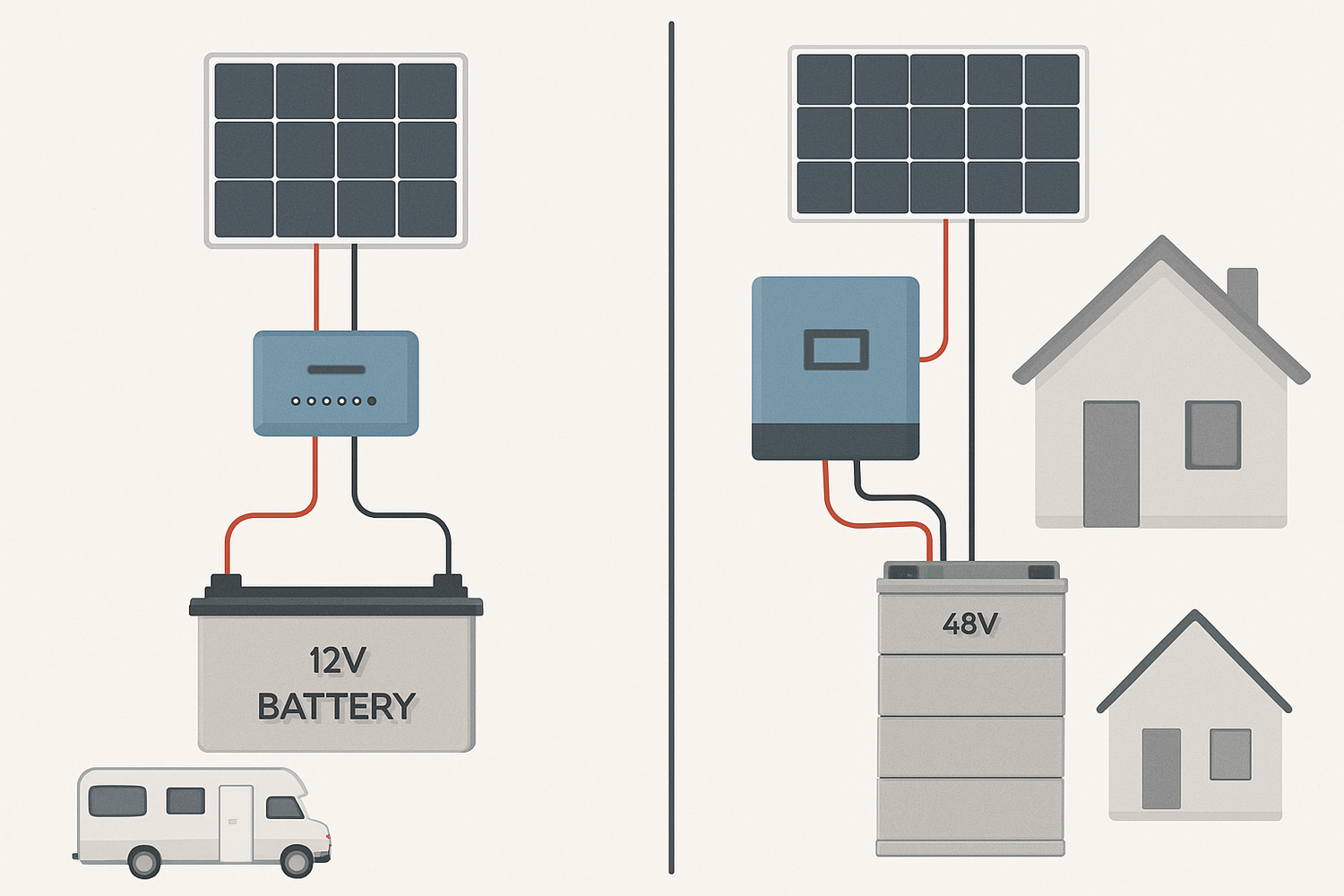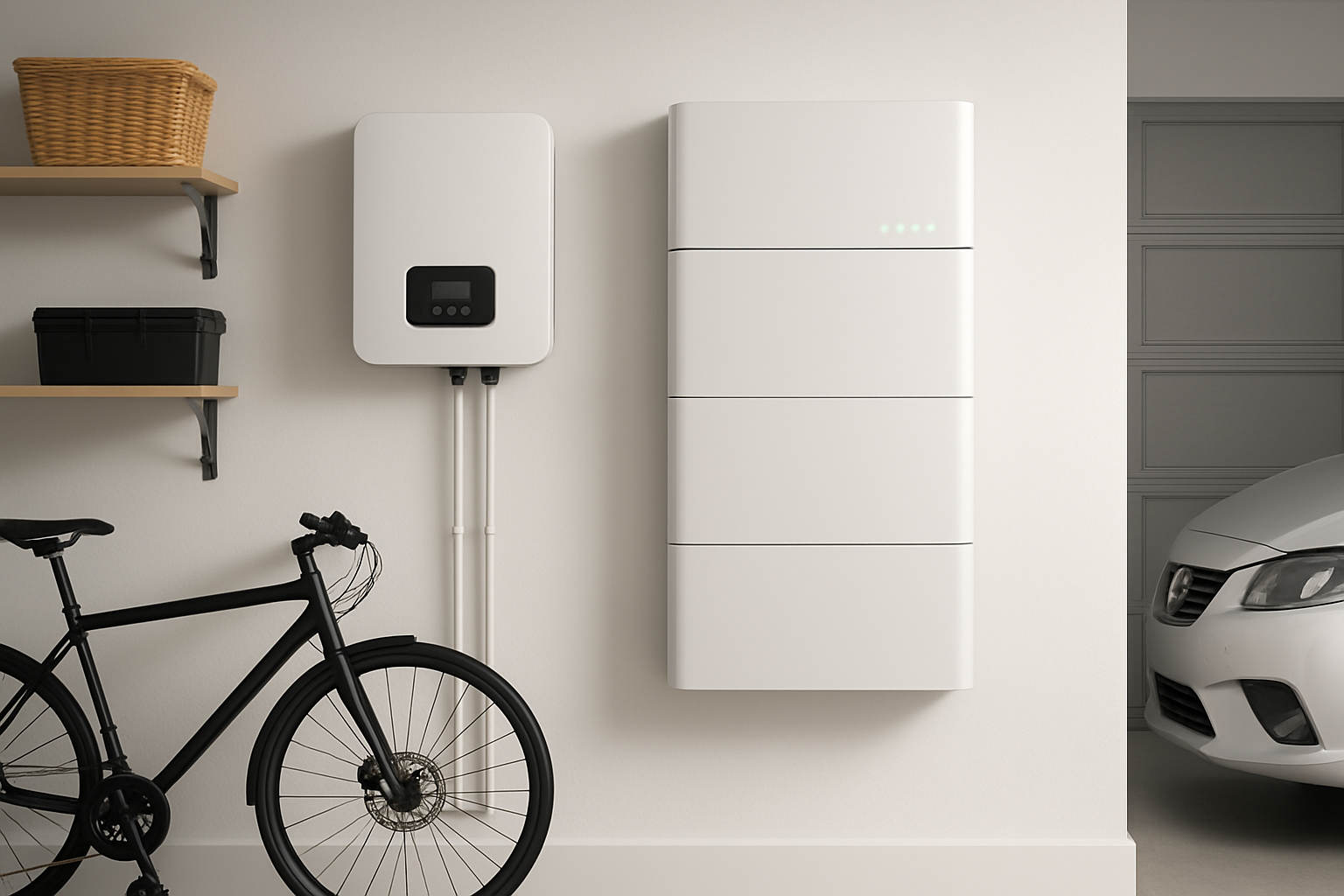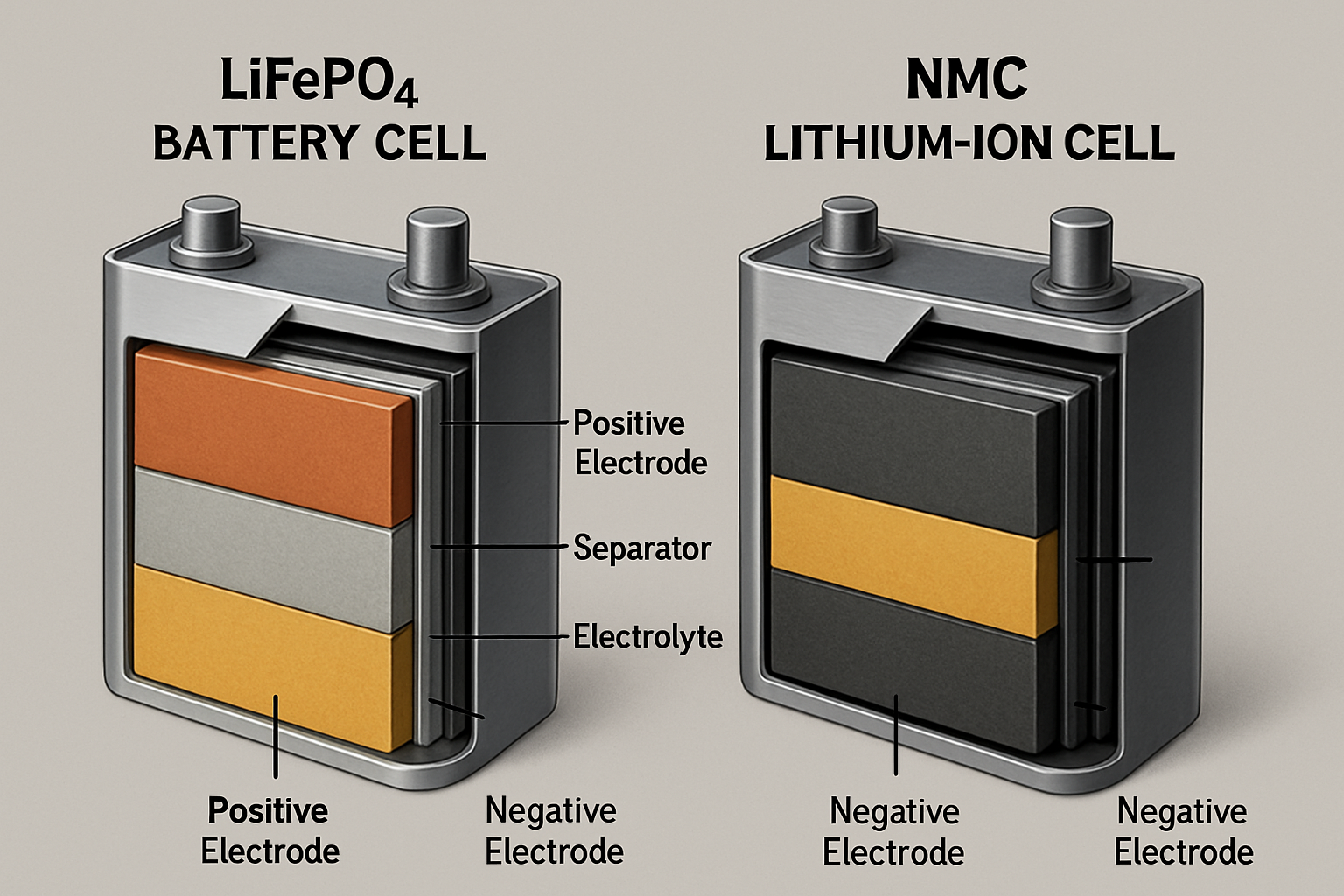Choosing the right battery is fundamental to designing a reliable solar energy system. The voltage of your battery bank—specifically whether to use a 12V or a 48V LiFePO4 battery configuration—directly influences your system’s efficiency, cost, and scalability. This decision goes beyond a simple number; it shapes the performance of your entire solar panel battery storage setup.
Understanding Battery Voltage in Solar Systems
Before comparing 12V and 48V options, it’s helpful to understand the basic principles. Voltage, current, and power are interconnected, and this relationship is central to sizing your solar system correctly.
What is Voltage and Why Does It Matter?
Think of voltage (V) as electrical pressure. It’s the force that pushes current (Amps) through the wires in your system. Power (Watts), which is the rate at which energy is used, is the product of voltage and current (Power = Voltage x Amps). For a given amount of power, a higher system voltage results in a lower current. This is a critical point because lower current reduces energy loss as heat in the wiring and allows for the use of thinner, less expensive cables.
The Role of LiFePO4 Chemistry
LiFePO4 (Lithium Iron Phosphate) has become a leading choice for solar storage due to its long cycle life, inherent safety, and high efficiency. Both 12V and 48V systems can leverage the benefits of LiFePO4 chemistry, but how they are applied depends entirely on the scale and goals of your project. The stability of this chemistry makes it a reliable foundation for both small-scale and large residential energy solutions.
The Case for a 12V LiFePO4 Battery System
A 12V LiFePO4 battery is a common starting point for many energy storage projects. Its familiarity and widespread component availability make it an accessible option for specific applications.
Applications and Advantages
A 12V system is often the ideal choice for small, well-defined power needs. Think of applications like RVs, boats, small cabins, or portable solar kits. The primary advantages include:
- Component Availability: A vast market exists for 12V-compatible components, including inverters, charge controllers, and appliances. This wide selection often leads to more competitive pricing.
- Simplicity: For those new to solar, a 12V system can be more straightforward to design and install. The wiring is less complex for basic setups.
- Portability: Due to smaller battery sizes and simpler configurations, 12V systems are well-suited for mobile and temporary power needs.
Limitations and Considerations
Despite its simplicity, a 12V system has significant drawbacks as power demands increase. The higher current required to deliver power at 12V leads to greater energy losses. This inefficiency, known as I²R loss, dissipates your stored energy as heat. To counteract this, you must use thicker and more expensive copper cables, which can substantially increase the overall cost, especially over longer distances.
The Power of a 48V LiFePO4 Battery System
As energy needs grow, a 48V LiFePO4 battery system presents a more efficient and scalable solution. It is the standard for modern residential and large off-grid solar panel battery storage.
Applications and Advantages
A 48V system is designed for larger energy loads, such as those found in a home, workshop, or extensive off-grid property. Its benefits directly address the limitations of 12V systems:
- Higher Efficiency: By operating at four times the voltage, a 48V system draws only one-quarter of the current for the same power output. This drastically reduces resistive heat loss, ensuring more of your stored solar energy is available for use.
- Thinner, Cheaper Wiring: The lower amperage allows for the use of smaller-gauge wiring, which is less expensive and easier to work with. As noted in research from the U.S. Department of Energy, optimizing system voltage can lead to cost savings from reduced copper usage. This principle is key to cost-effective system design.
- Enhanced Scalability: 48V systems are much easier to expand. You can add more solar panels and batteries without needing to overhaul your wiring or major components, making your investment future-proof.
Limitations and Considerations
The primary hurdle for 48V systems can be the higher upfront cost of compatible components. A 48V inverter or charge controller is typically more expensive than its 12V counterpart. However, this initial expense is often offset by savings in wiring and improved long-term efficiency.
A Head-to-Head Comparison: 12V vs. 48V
Choosing the right voltage requires a clear understanding of how each option performs across key metrics. The decision hinges on your specific energy requirements and future plans.
| Feature | 12V LiFePO4 System | 48V LiFePO4 System |
|---|---|---|
| Typical Application | RVs, boats, small cabins, portable setups | Residential homes, large off-grid systems |
| Energy Efficiency | Lower (due to higher current and heat loss) | Higher (due to lower current and reduced heat loss) |
| Wiring Cost | Higher (requires thicker copper cables) | Lower (allows for thinner, less expensive cables) |
| Component Cost | Generally lower for individual components | Generally higher for individual components |
| System Scalability | Limited; expansion can be complex | High; designed for easy expansion |
| Best For | Daily energy needs under 3,000 Wh | Daily energy needs over 3,000 Wh |
Calculating Your Energy Needs
To make an informed choice, start by calculating your daily energy consumption in Watt-hours (Wh). List all the appliances you plan to power, find their wattage, and estimate how many hours per day you will use them. For example, a 100W television used for 4 hours consumes 400 Wh. Summing this up for all devices gives you a total daily energy target. If your total exceeds 3,000 Wh, a 48V system is almost always the more practical and efficient option.
The Impact on System Components
The voltage choice affects every major component in your solar system. A 48V inverter can handle larger power loads more efficiently than a 12V model. Similarly, a 48V MPPT charge controller can manage larger solar arrays and convert high-voltage DC from the panels to battery voltage with greater efficiency. As the International Energy Agency highlights in its reports, the performance of these 'balance of system' components is just as important as the panels and batteries themselves.
Making the Right Choice for Your Solar Project
The decision between a 12V and 48V LiFePO4 battery is a critical step in sizing your solar system. For small, mobile applications where simplicity is key, a 12V system remains a viable choice. For stationary applications like a home or a large off-grid property, a 48V system offers superior efficiency, scalability, and long-term value. The ability to handle larger loads with less energy loss is a decisive advantage. For a comprehensive look at how different factors influence battery output, consulting an ultimate reference on solar storage performance can provide valuable data-driven insights. This is especially true in remote communities where system reliability is paramount, a challenge explored in a guidebook from IRENA on off-grid projects.
Final Thoughts
Ultimately, the best system voltage is the one that aligns with your specific power needs and future goals. Sizing your solar system correctly from the outset ensures you build a reliable, efficient, and cost-effective energy solution. A well-planned system based on a realistic energy audit will serve you well for years to come, providing a stable source of clean power.
Disclaimer: The information provided is for educational purposes only and does not constitute financial or legal advice. Consult with a qualified professional before making any investment decisions or system installations.
Frequently Asked Questions
Can I upgrade from a 12V to a 48V system later?
Upgrading is possible but often requires replacing major components like the inverter and charge controller, making it a costly process. It is generally more cost-effective to choose the right voltage from the start based on current and anticipated future needs.
Is a 48V system more dangerous than a 12V system?
While 48V is still classified as a safe, low voltage, it carries a higher potential for creating an electrical arc than a 12V system. Following proper safety precautions, such as using insulated tools, wearing protective gear, and adhering to installation guidelines, is essential when working with any electrical system.
How does voltage affect battery lifespan?
Voltage itself does not directly impact the chemical lifespan of LiFePO4 cells. However, a well-designed 48V system operates more efficiently with less thermal stress on components. The lower currents also reduce strain on battery terminals and wiring. This improved operating environment can contribute to a longer service life for the entire system.





Leave a comment
All comments are moderated before being published.
This site is protected by hCaptcha and the hCaptcha Privacy Policy and Terms of Service apply.